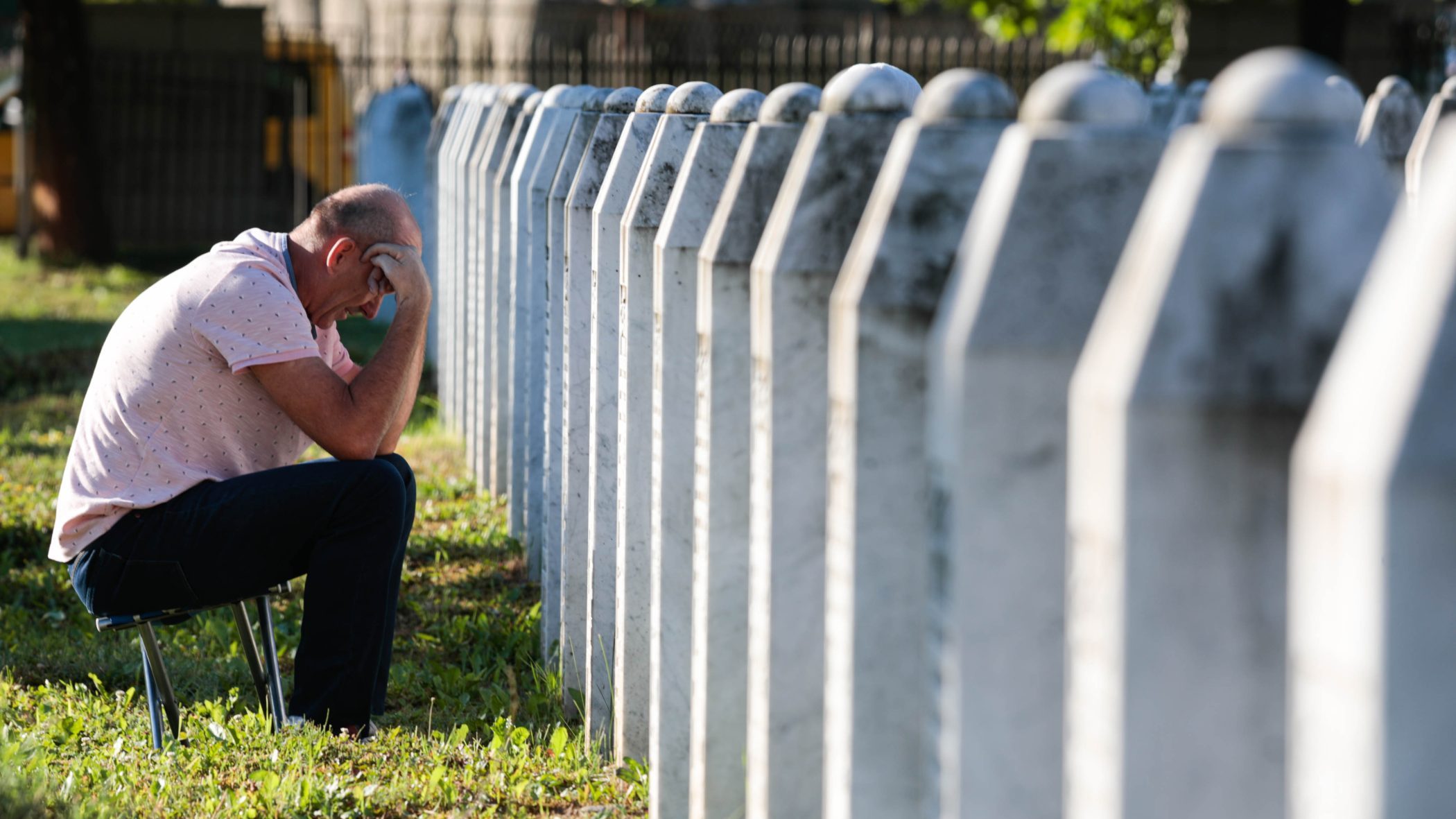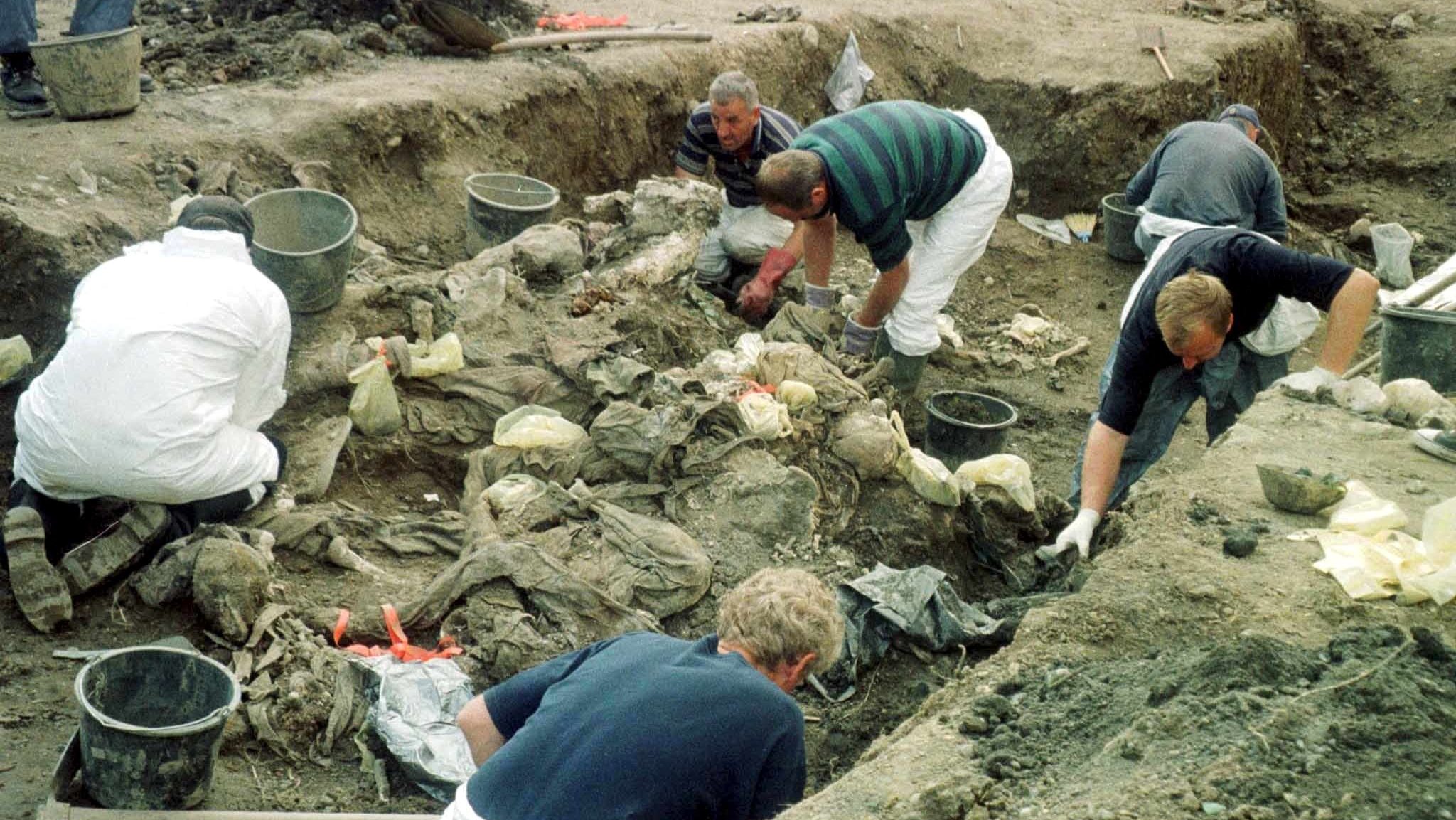This post is also available in: Bosnian
The first year of the trial in Belgrade for the abduction and killing of 20 passengers from a train at Strpci station in Bosnia and Herzegovina during the war in 1993 has heard testimony from relatives of the victims, other passengers, policemen, Bosnian Serb Army soldiers and the defendants themselves, as a fuller picture of the crime more than 26 years ago began to emerge.
However, some of the key witnesses changed their testimonies during the trial and accused the prosecutor of pressurising them. They altered their accounts of what they saw in attempts to show that none of the defendants were present at the scene of the crime or participated in it, but also to say that others accused of the same crime in other trials were also not present.
Marina Kljaic from the Humanitarian Law Centre in Belgrade, who is the legal representative of victims in the case, told BIRN that the former fighters who have testified are “witnesses who are seeking to minimise their involvement in critical events, and at the same time help the accused”.
However, Kljaic added: “The court has extensive experience with the testimony of such witnesses during its work so far.”
Five people are on trial in Belgrade – Gojko Lukic, brothers Dusko and Gojko Vasiljevic, Jovan Lipovac and Dragana Djekic. Apart from Lipovac, who was a Bosnian Serb Army soldier, they were members of the Avengers paramilitary unit.
The leader of the Avengers was Milan Lukic, who was sentenced to life imprisonment in December 2014 by the Hague Tribunal for wartime crimes, but not for the Strpci massacre.
According to the indictment in the Belgrade case, on February 27, 1993, a group of fighters, mostly from the Avengers group, came to the small train station at Strpci, near the Bosnia-Serbia border, and forced the train dispatcher to stop a train from Belgrade that was passing by on its way to Montenegro. Some of them entered the carriages, started identifying passengers by their identity documents, and took 20 people off the train.
All of them were non-Serbs – 18 Bosniaks, one Croat and one person whose identity remains unknown to this day.
They loaded them into a military truck and drove them to an elementary school in the nearby village of Prelovo. There the victims were beaten, ordered to take off their clothes and robbed of money and valuables.
Wearing nothing but underwear, with their hands tied behind their backs, the victims were driven to a burned-out house in the village of Musici, where they were executed in groups of two or three. Two of the victims were killed while trying to escape.
The remains of only four of victims have been found, while the others are still listed as missing.
So far only two people have been convicted of the Strpci crime: Mico Jovicic, who pleaded guilty in 2016 in Bosnia and got five years in prison, and Nebojsa Ranisavljevic, who was convicted in Montenegro in 2003.
Meanwhile, ten more former Bosnian Serb soldiers are currently on trial for the crime at the Bosnian state court in Sarajevo.
The story of train number 671
Zeljko Radojicic was driving train number 671 on February 27, 1993. The train did not usually stop at Strpci station but this time, it was halted there, he told the Belgrade court.
“When we stopped like that, outside normal procedure, I went to the train dispatcher for him to inform me why we stopped. A crowd had gathered, there were soldiers everywhere… The train dispatcher came up without his cap, which is outside every normal procedure, and said to me: ‘When these are done, I will give you papers to go on,’” Radojicic testified.
The train was full of passengers, but there were also a police patrol escorting it.
No one reacted when the fighters started to take passengers off the train because, the majority of witnesses said, they thought they were searching for deserters from the Bosnian Serb Army.
One of the witnesses, policeman Miroslav Vranic, who was among those escorting the train, said officers were ordered to help Bosnian Serb forces if they got on the train to look for deserters.
“On the patrol sheet, our task was that if the military police of Republika Srpska came in order to catch military fugitives, to give assistance,” Vranic told the court.
Two uniformed people entered train driver Radojicic’s cab and checked him. He said that the soldiers were wearing different uniforms but he did not see their insignias.
“They were taking passengers out, I saw that,” Radojicic added.
When everything was done, Radojicic was given papers allowing him to continue and the train left the station, without the passengers who were taken out.
The seized passengers were then taken to the former elementary school in Prelovo. At that point the Bosnian Serb Army was using the school and had a military kitchen and a communications office there.
According to the indictment, the captives were beaten and tortured in the school gym, although according to Bosnian Serb Army ex-soldiers who testified in Belgrade, only one of them was assaulted.
After they were taken to the village of Musici, two of them were killed while trying to escape and the others were shot at close range. One trial witness blamed Milan Lukic for killing all of them.
The next day, a tractor was used to take the bodies to the nearby Drina riverbank, where they were dumped in the water.
“There were a lot of dead people, I do not know how many, and I was ordered to transfer them to the Drina,” Dragoljub Carkic, who a member of the First Company of the Bosnian Serb Army Light Visegrad Brigade’s First Battalion, told the court.
Witnesses change their stories
Most of the trial witnesses so far have claimed that they do not remember a lot about what happened because so many years have passed since the crime.
No witness said they could recognise any of the fighters who entered the train, and the former fighters who were acquainted with some of defendants denied that any of them were present at Strpci station, at the school in Prelovo, or in Musici.
However, witnesses told different stories during the investigation.
Krsta Papic, commander of the First Company of the Bosnian Serb Army’s Visegrad Brigade, told the Serbian War Crimes Prosecutor in 2014 that on the night of the abductions, he saw defendant Gojko Lukic at the school in Prelovo and heard the voice of defendant Dragana Djekic there too.
But in the courtroom in December 2019, Papic denied that he saw Gojko Lukic or recognised Djekic’s voice at the school.
Papic’s driver and communications officer Dusan Bozic said during the investigation in Bosnia that on the same evening, he saw around 15 civilians at the school, some of whom were half-naked, while all of them had visible bruises.
Among others, he mentioned seeing Milan Lukic, defendant Gojko Lukic and a women of whom he said: “I assumed it was Dragana.”
In the Belgrade courtroom, Bozic retracted this, alleging that he had been under pressure from the authorities and that he did not even go into the school that night.
Papic meanwhile only mentioned seeing Milan Lukic at the school.
Nebojsa Ranisavljevic, who has already been convicted of participation in the Strpci crime, also said that his previous statement in the 1990s was given under pressure and that he was beaten up.
His 1990s statement said that Milan Lukic and Boban Indjic killed the passengers. In Belgrade, he claimed that Lukic killed them alone and that Indjic was not there. He added that co-fighter Mico Jovicic was bragging about it the next day, holding a bloody knife.
Both Indjic and Jovicic were arrested in Bosnia and Herzegovina. In November 2016, Jovicic pleaded guilty and was jailed for five years. Indjic is still on trial.
Marina Kljaic from the HLC said that witnesses sometimes try to justify changing their statements by claiming “alleged pressures from prosecutor’s offices or police”.
But she argued that this will not necessarily have an impact on the court’s final decision.
Milan Lukic named and blamed
All of those present at some point during the Strpci crime said that Milan Lukic was there.
Both the Serbian and Bosnian indictments in the case say that two people actually killed the passengers who were seized from the train. The Bosnian indictment identifies the direct perpetrators as Milan Lukic and Boban Indjic.
The Bosnian prosecution belatedly indicted Milan Lukic for Strpci in December 2019. According to the indictment, he participated in abducting the passengers from the train, in taking them to the Prelovo school where they were “beaten, tortured, abused, robbed” and also “personally participated in the murder of the abducted people, whose bodies were dumped in the Drina River”.
His alleged co-perpetrator Indjic is one of the ten ex-soldiers currently on trial at the Bosnian state court.
The Bosnian indictment offers more details than the one issued in Serbia – and also names the person at the top of the chain of command.
It says that 18 of the passengers were Bosniaks who were “citizens of Serbia and Montenegro from the Sandzak area ”.
The purpose of the abductions from the train, the Bosnian indictment continues, was “to provide evidence of the participation of Muslims from Sandzak in combat on the territory of Bosnia and Herzegovina, with orders to organise and carry out an action to capture them”.
It says that the Strpci massacre happened “upon receipt of an order from the Tactical Group Visegrad Command from February 21, 1993, forwarded on the request of the Commander-in-Chief of the Army of Republika Srpska”.
The commander-in-chief at the time was Bosnian Serb President Radovan Karadzic, who was jailed for life by the UN court in The Hague in March 2019 for genocide, war crimes and crimes against humanity.
The Serbian indictment only states that the abductions happened “after a special armed group of about 25-30 VRS members was formed in Visegrad on February 27, 1993 with the specific task of abducting non-Serb passengers from high-speed train 671”.
It does not specify who gave them the order to do this, and the commander-in-chief, Karadzic, is not mentioned.
Both trials in Belgrade and Sarajevo continue.



